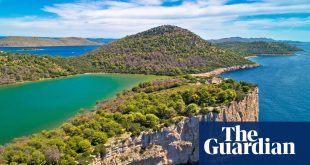Lancashire’s great seaside resorts were built close to mill towns, mining towns, cities and soot. Railways siphoned the sun-starved to the resorts, which grew and grew, until they looked a bit like the places the daytrippers and Wakes weekers were trying to escape.
That’s why Hest Bank, north of Morecambe, is special. It is scenic. It feels almost pastoral. It’s small and tranquil. And it has a namesake pub that combines the salty air and big skies of the foreshore with a cosy, village quality. People from all over Lonsdale come here for lunches and beer-garden sessions.
It is also well worth a walk and this one, from Lancaster to the littoral, is as easy as a donkey-ride.
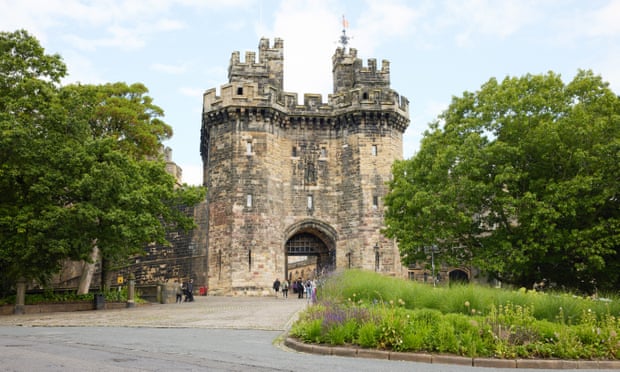
I start highish up, at Lancaster Castle, overlooking the medieval core of this city. It’s a forbidding building that accentuates the hilly location; topography is one of the reasons the Romans came – they could survey the coast for enemies as they marched north. Three successive Roman forts provided the foundations for the later Norman castle. It was heightened and strengthened during the middle ages, and was the symbolic powerbase of John O’Gaunt, duke of Lancaster – uncle of Richard II, father of Henry IV (and 13 other babes/bastards) and grandfather of Henry V. The castle functioned as prison and court, providing dungeon and gruel for the Pendle witches, Quakers founder George Fox, Peterloo speaker Henry “Orator” Hunt and the Birmingham Six. The prison closed only in 2011.
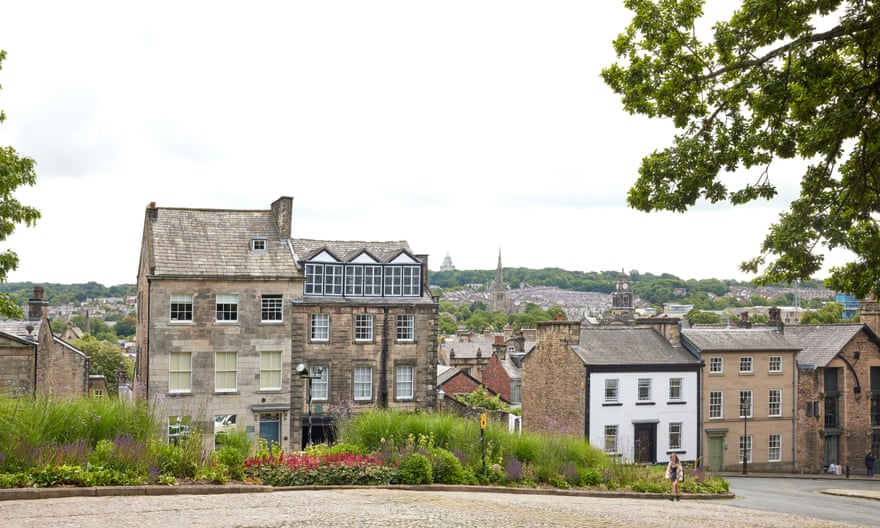
Lancaster is full of steep lanes and streets, all the way up to the Ashton Memorial – a domed mega-folly that you can see from almost anywhere around the city. But my walk takes me down to the Lune, where a foot and bike path – initially scruffy and litter-strewn but fast-improving – follows the river to the Lune Aqueduct. Completed in 1797, it is, like so much in Lancaster, constructed from ashlar sandstone, austere and gloomy. Here I climb – the only ascent of the day – a staircase to head west along the towpath of the Lancaster Canal.
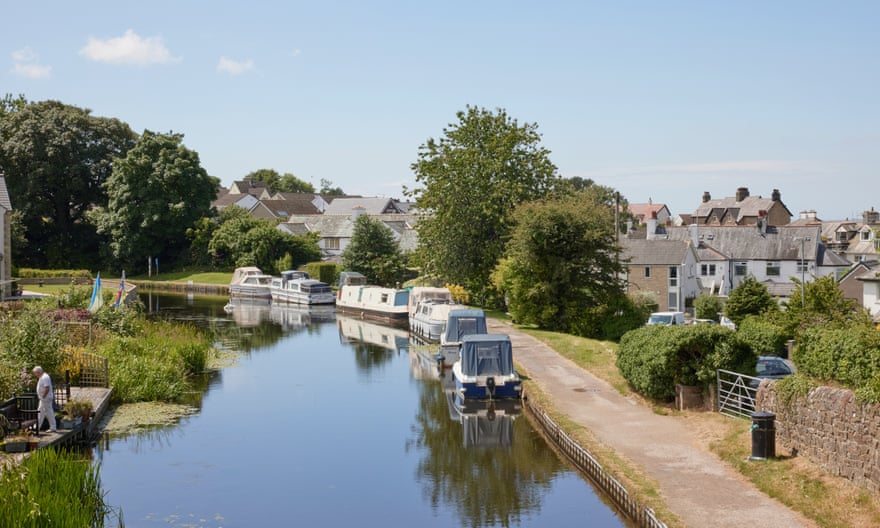
Canal walking is a curious pastime. Being flat, it’s hardly more of an effort than sitting. On the other hand, even at a leisurely stroll you find yourself passing narrowboats. Plus, the lack of any need to navigate or think means you can survey your surroundings; I haven’t Googled any twitcher websites so shan’t make idle promises of rare raptors or stray flamingos, but I can affirm that the canal, which after the aqueduct cuts through a swathe of green belt, was joyously noisy with thrushes, finches, blackbirds and swallows, and I did see a lanky grey heron take off when disturbed by a barge. Unlike some other canals, the Lancaster is wooded and bushy-hedged, which makes the walk very pleasant; the tree canopy also keeps the rain off, so you can watch the drizzle dance on the canal while keeping dry.
As a south Lancastrian, I’d always thought of Lancaster as a somewhat effete and scholarly place, not really northern or fully of the county. But the city has, and retains, quite a lot of industry. Warehouses and recycling plants dirty the banks of the Lune, and the canal is known as the “black and white”, in reference to the coal it shipped from Preston and the limestone quarried at the Kendal end.
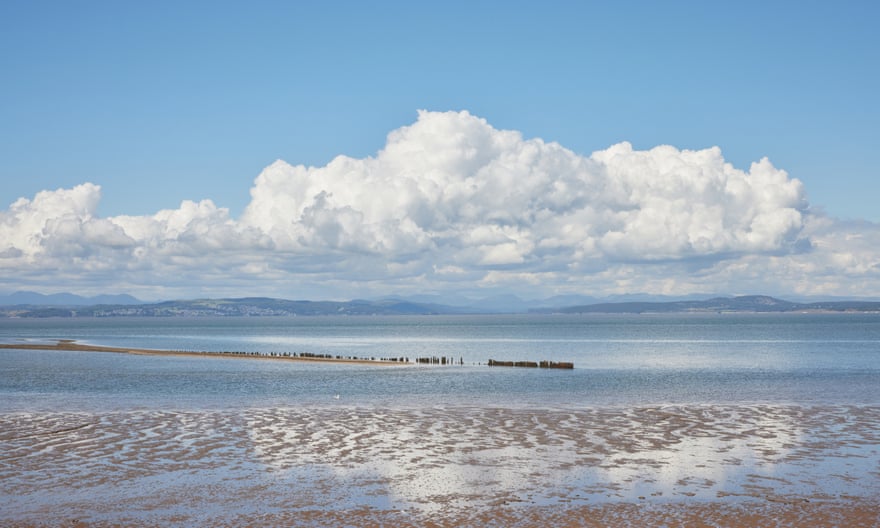
As I approach the coast, I begin to glimpse mountain tops and a watery horizon. Always a lovely moment, the sensation of arriving at a seaside, it is particularly wonderful – and a tad surreal – while walking beside a canal. These waterways, after all, were mainly inland affairs, fake rivers to ease the flow of goods. A few semis spring up and then a small marina – barge holidays seem to be all the rage – and then I see a road down to the shore. This is Hest Bank, the place, and it must be a quite lovely one to live in, with the canal at the top of the street and Morecambe Bay at the bottom. The tide is low, and the sandflats are a swirl of light and shadow.
I resist the atavistic pull of the prom and go into the pub for a pint.
Sitting down for the first time in three hours – there are not as many benches along the canal as there might be – I relax, lean back, browse a menu, reflect on the fact it’s Sunday, and order. It is decided: I won’t walk all the way back. But after my roast dinner I do go down the street and follow the pebbly beach, and then the hardtop promenade, all the way to Morecambe station. More flatness, more water, more birds – and distant Helvellyn and a westering sun welcoming me to the seafront and waves of memories.
Google map of the route
Allow Google Maps content?
This article includes content provided by Google Maps. We ask for your permission before anything is loaded, as they may be using cookies and other technologies. To view this content, click ‘Allow and continue’.
Start Lancaster Castle
Distance 8 miles
Time 4 hours
Total ascent 140 metres
Difficulty Easy
GPX map explore.osmaps.com
The pub

There’s probably been a pub at this site since the 12th century, greeting monks arriving over the sands from the Furness peninsula with mead and cockfights. The present Hest Bank is mainly a 19th-century coaching inn, with lots of lounges over several levels and a large beer garden. There are tasty roasts on Sundays, pies and seasonal standards (cod loin, lamb steak) on other days, and tacos and Thai food too. A grazing platter combines the Lancastrian (pork pie, black pudding bites) with the Louisianan (southern-fried chicken strips). Of the three real ales on tap – Farmers Blonde, Breaker pale ale and Timothy Taylor’s Boltmaker – the latter, for me, reflects the pub most accurately: it’s a no-nonsense, very traditional local, with helpful, chatty staff. The horseshoe shaped bar is as nice as any of the more furnished rooms, and is brightly lit, airy and feels more pubby.

Where to stay
The seaside is awash with “classic” B&Bs and you could book into a stylish room at the art deco Midland, but a fresh-faced, fair-priced alternative, inland, is Lancaster Barn. As the name suggests, the hotel is a stone-built rural building. It’s six miles outside the city, but inside is a cleanly designed, pale-wood and white-linen interior – with Hypnos beds and espresso machines. A Mediterranean breakfast, locally sourced supper grub and British fizz complete the picture. Formerly a pub, a post office, and an actual barn, this is an attractive recycling of a historic site.
Double rooms B&B from £141
 Top Naija News: Nigerian News, Breaking News Nigeria and World News Top Naija News is a daily news publication in Nigeria, delivering the latest breaking news in Nigeria and around the world.
Top Naija News: Nigerian News, Breaking News Nigeria and World News Top Naija News is a daily news publication in Nigeria, delivering the latest breaking news in Nigeria and around the world.


